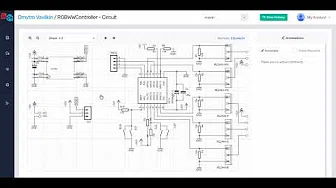Files
Last update 8 years 2 months
by
Hu-Cheng Lee
| FileslibraryRTClibexamplesds1307nvram | |
|---|---|
| .. | |
| ds1307nvram.ino |
ds1307nvram.ino// Example of using the non-volatile RAM storage on the DS1307. // You can write up to 56 bytes from address 0 to 55. // Data will be persisted as long as the DS1307 has battery power. #include <Wire.h> #include "RTClib.h" #if defined(ARDUINO_ARCH_SAMD) // for Zero, output on USB Serial console, remove line below if using programming port to program the Zero! #define Serial SerialUSB #endif RTC_DS1307 rtc; void printnvram(uint8_t address) { Serial.print("Address 0x"); Serial.print(address, HEX); Serial.print(" = 0x"); Serial.println(rtc.readnvram(address), HEX); } void setup () { #ifndef ESP8266 while (!Serial); // for Leonardo/Micro/Zero #endif Serial.begin(57600); rtc.begin(); // Print old RAM contents on startup. Serial.println("Current NVRAM values:"); for (int i = 0; i < 6; ++i) { printnvram(i); } // Write some bytes to non-volatile RAM storage. // NOTE: You can only read and write from addresses 0 to 55 (i.e. 56 byte values). Serial.println("Writing NVRAM values."); // Example writing one byte at a time: rtc.writenvram(0, 0xFE); rtc.writenvram(1, 0xED); // Example writing multiple bytes: uint8_t writeData[4] = { 0xBE, 0xEF, 0x01, 0x02 }; rtc.writenvram(2, writeData, 4); // Read bytes from non-volatile RAM storage. Serial.println("Reading NVRAM values:"); // Example reading one byte at a time. Serial.println(rtc.readnvram(0), HEX); Serial.println(rtc.readnvram(1), HEX); // Example reading multiple bytes: uint8_t readData[4] = {0}; rtc.readnvram(readData, 4, 2); Serial.println(readData[0], HEX); Serial.println(readData[1], HEX); Serial.println(readData[2], HEX); Serial.println(readData[3], HEX); } void loop () { // Do nothing in the loop. }








